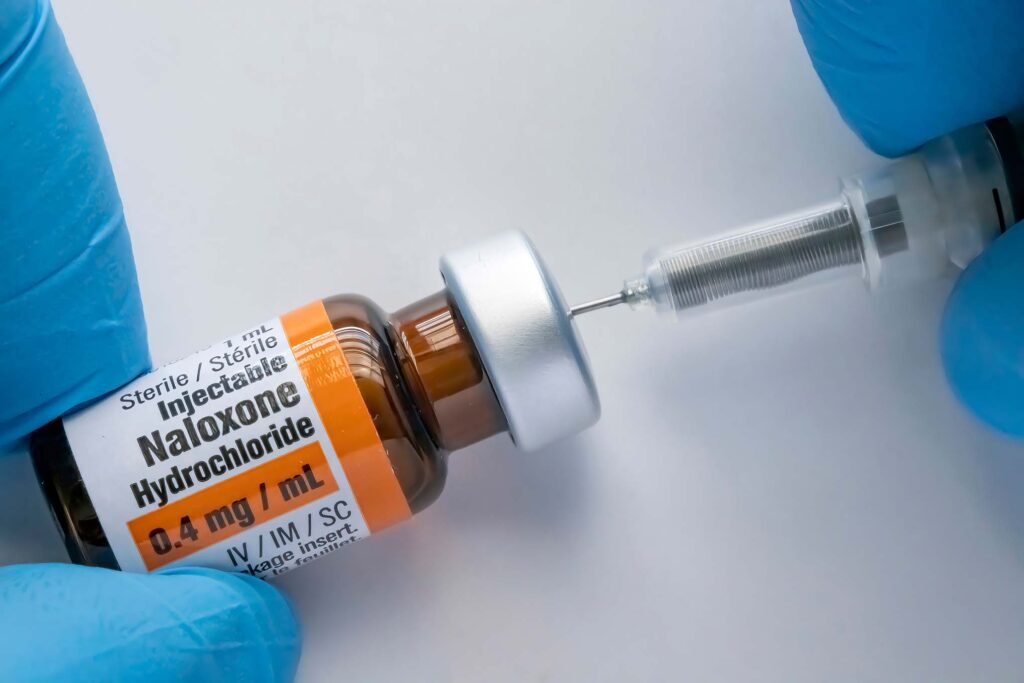
Shutterstock/oasisamuel
By Mohamed Hagahmed, MD, MPH, FACEP
A new nonopioid sedative, medetomidine, is rapidly becoming the next adulterant of concern in illicit drug supply.
Like xylazine, medetomidine is a veterinary alpha-2 adrenergic agonist not approved for human use. When combined with fentanyl, it can cause profound sedation, respiratory depression, and hemodynamic compromise—and naloxone doesn’t reverse it.
For EMTs and paramedics, this growing trend requires a shift in how we recognize and respond to overdose syndromes.
What Is Medetomidine?
Medetomidine is a central alpha-2 adrenergic agonist used in veterinary medicine to induce sedation and analgesia. In humans, its pharmacologic relative dexmedetomidine is used for procedural sedation and ICU management, but medetomidine itself has no approved human indication. Its effects include sedation, bradycardia, hypotension, and respiratory depression.1
Like xylazine, medetomidine is now appearing in fentanyl samples in multiple regions of the United States. But unlike opioids, it does not respond to naloxone—a critical limitation in prehospital care.
Where Is It Showing Up?
Medetomidine was first identified in the illicit opioid supply in Maryland in 2022, and its presence has grown rapidly in cities like Philadelphia and Pittsburgh. In one surveillance program in Philadelphia, medetomidine was found in 72% of fentanyl samples, surpassing even xylazine in prevalence.2
This adulterant increases overdose severity and complicates the clinical picture. Importantly, these overdoses are often incompletely responsive to naloxone, creating confusion and concern among first responders.3,4
What It Looks Like in the Field
Medetomidine overdose may mimic opioid toxicity with:
- Unresponsiveness
- Shallow or absent respirations
- Bradycardia
- Hypotension
- Miosis
However, a key difference is that naloxone does not improve these symptoms. Medetomidine acts independently of the opioid receptors and cannot be reversed by naloxone.2
Withdrawal from medetomidine presents a different challenge. In two recent CDC reports, patients withdrawing from fentanyl adulterated with medetomidine developed:
- Severe agitation
- Hypertension
- Tachycardia
- Autonomic instability
- Refractory symptoms despite standard opioid withdrawal protocols
In Pittsburgh, 23 patients over six months presented with severe medetomidine withdrawal, with most requiring ICU-level care and administration of dexmedetomidine and/or clonidine to manage symptoms.5
Why More Naloxone Isn’t the Answer
It’s important to underscore: naloxone saves lives, and it should absolutely still be used in suspected opioid overdoses. But when medetomidine is involved, more naloxone does not lead to better outcomes. In fact, giving repeated doses with no effect may delay essential care.
Instead, EMS providers should focus on restoring ventilation and oxygenation:
- Use bag-valve-mask ventilation or airway adjuncts
- Provide supplemental oxygen
- Titrate naloxone only until respiratory effort resumes, not full arousal
This “breathe, don’t wake” strategy is safer and more appropriate when sedatives like medetomidine may be involved.2,6
What About Withdrawal?
As more people exposed to adulterated fentanyl stop using or enter treatment, withdrawal syndromes are changing. EMS providers may be called to assist patients in the post-overdose or detoxification window with:
- Unusual agitation
- Profound tachycardia or hypertension
- Mental status changes
- Poor response to opioid agonists or clonidine
This suggests nonopioid components—like medetomidine—are playing a larger role in withdrawal physiology.4,5
Implications for EMS Practice
- Be aware of new adulterants: If naloxone fails to revive a patient, consider medetomidine, xylazine, or other sedatives.
- Focus on airway and breathing: Supportive care is essential. Don’t waste time escalating naloxone dosing without effect.
- Use naloxone wisely: Titrate to restore respiration, not to wake the patient.
- Prepare for complicated withdrawal syndromes: Patients may present with unexpected autonomic symptoms days after use.
- Communicate with Emergency Department teams: Let them know if you suspect medetomidine exposure, especially in cases of incomplete naloxone response or bradycardia.
Conclusion
Medetomidine adulteration is altering the overdose and withdrawal landscape for people who use fentanyl. As with xylazine, this change requires paramedics and EMTs to adapt their response strategy. Naloxone remains essential—but more isn’t always better.
The priority remains: restore breathing, protect the airway, and be prepared for complex withdrawal.
Author’s Note: Special thanks to Michael Lynch, MD, FACMT, for his expert review and thoughtful feedback on this article.
About the Author
Mohamed Hagahmed, MD, MPH, FACEP, is a clinical assistant professor of emergency medicine at the University of Pittsburgh and associate medical director at the Center for Emergency Medicine. He serves as EMS medical director for multiple systems in Western Pennsylvania and practices in high-acuity emergency departments across the region. A graduate of the Johns Hopkins Bloomberg School of Public Health, Hagahmed is passionate about education in resuscitation, critical care and toxicologic emergencies. He is also the creator and host of EMERGE in EM, a podcast dedicated to emergency medicine education and global health empowerment.
References
1. de Andrade Horn, P., Berida, T. I., Parr, L. C., Bouchard, J. L., Jayakodiarachchi, N., Schultz, D. C., Lindsley, C. W., & Crowley, M. L. (2024). Classics in Chemical Neuroscience: Medetomidine. ACS Chemical Neuroscience, 15(21), 3874–3883. org/10.1021/acschemneuro.4c00583
2. Centers for Disease Control and Prevention. (2025a). Notes from the field: Suspected medetomidine withdrawal syndrome—Philadelphia, Pennsylvania, September 2024–January 2025. Morbidity and Mortality Weekly Report, 74(15), 267–268. gov/mmwr/volumes/74/wr/mm7415a2.htm
3. Associated Press. (2025, May 1). Animal sedative medetomidine is showing up in the US illegal drug supply, CDC says. apnews.com/article/40e02b935d1c37189da4b9cd6ccd3210
4. Nham, A., Le, J. N., Thomas, S. A., et al. (2025). Overdoses involving medetomidine mixed with opioids — Chicago, Illinois, May 2024. MMWR Morb Mortal Wkly Rep, 74, 258–265. gov/mmwr/volumes/74/wr/mm7414a3.htm
5. Centers for Disease Control and Prevention. (2025b). Notes from the field: Severe medetomidine withdrawal syndrome in patients using illegally manufactured opioids—Pittsburgh, Pennsylvania, October 2024–March 2025. Morbidity and Mortality Weekly Report, 74(15), 269–271. gov/mmwr/volumes/74/wr/mm7415a3.htm
6. Penn Center for Addiction Medicine and Policy. (2025). Medetomidine. penncamp.org/medetomidine


Good information, and scary at the same time. I am a high school teacher and EMT. This is very helpful as our students are always trying new things. Question. How do you know how many doses of Narcan to administer before you get to the point of failure?